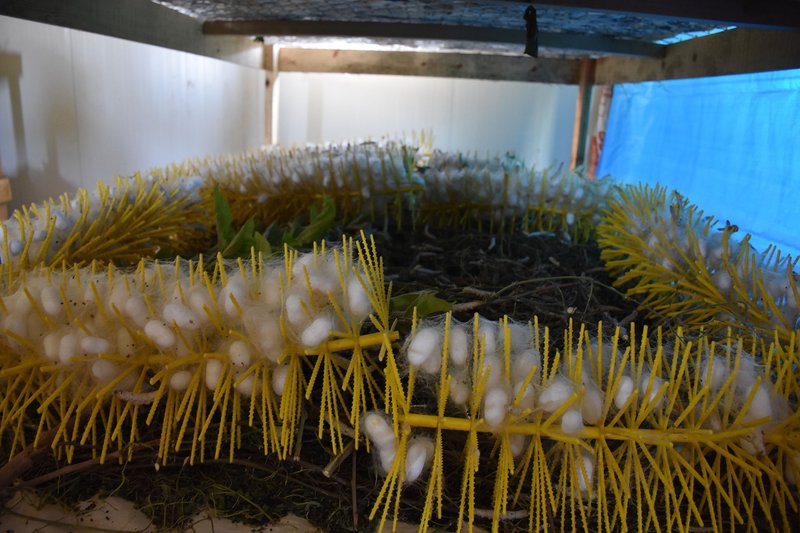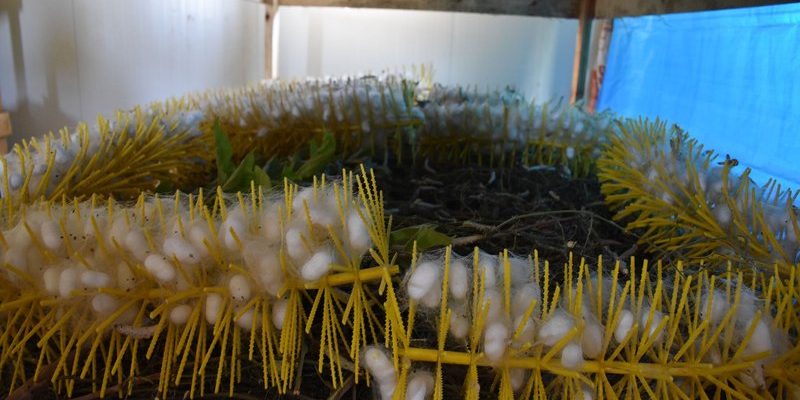
So, what is silkworm cultivation in urban microfarms? It’s the practice of raising these charming creatures in small spaces, typically at home or within community gardens. With a growing interest in sustainability and local food sources, more people are exploring this unique opportunity. Silkworms can produce silk, provide nutritious food, and even help educate others about the wonders of nature and agriculture. Let’s dive into the benefits, methods, and joy of creating your very own silkworm microfarm.
Understanding Silkworms: The Basics
Before jumping into cultivation, it’s essential to know what silkworms are and how they live. Silkworms are the larvae of the *Bombyx mori* moth, specifically bred for silk production. They thrive on a diet mainly comprised of mulberry leaves, which you can grow in your backyard or even in pots on your balcony. Isn’t that neat?
These little critters start their lives as eggs and undergo several molts before spinning their silk cocoons. It’s a process that’s both fascinating and awe-inspiring. You might be wondering why these tiny creatures are valuable. Well, not only do they produce silk, but their larvae, known as silkworms, are also high in protein and can be consumed, making them a sustainable food option. Imagine having a mini food factory right at home!
Setting Up Your Microfarm
Creating a silkworm microfarm in an urban setting doesn’t need to be complicated. Start with a small space, like a corner of your kitchen or a dedicated shelf. All you need is:
- A container to house your silkworms (think plastic or glass).
- Mulberry leaves for food.
- Temperature control; aim for a warm, humid environment.
- Good ventilation to keep everything fresh.
Place your container in a location where it can get indirect sunlight. Silkworms are surprisingly low-maintenance, but keeping an eye on the temperature and humidity is crucial. You might find that a simple thermometer and a hygrometer (which measures humidity) will be your best friends in this process. What’s great is that this setup is relatively inexpensive, making it perfect for beginners.
The Life Cycle of Silkworms
Understanding the life cycle of silkworms can help you better care for them. They go through several stages:
1. **Egg**: The tiny eggs hatch into larvae.
2. **Larvae**: This is the stage where they eat mulberry leaves voraciously and molt several times, growing rapidly.
3. **Pupa**: After reaching their full size, they spin a silk cocoon around themselves for protection.
4. **Moth**: Finally, they emerge from the cocoon as adult moths.
*Here’s the thing:* each stage requires different levels of care and attention. For example, during the **larvae stage**, they need lots of food and a clean environment. You’ll want to keep their space tidy to prevent diseases. This process can take about 6-8 weeks, depending on the temperature and conditions. It’s like watching a fascinating show unfold right before your eyes!
Harvesting Silk: How It Works
Once your silkworms have spun their cocoons, you can harvest silk. But hold on a second; it’s important to know that the process is delicate. You can either harvest the cocoons before the moths emerge or let them hatch naturally. If you choose the first option, you will need to boil the cocoons to kill the pupa inside, which prevents damage to the silk.
The silk from one cocoon can produce about 1,000 meters of silk thread, which is incredible! To extract the silk, you’ll need to carefully unwind it. It can take practice, but many people find it rewarding. You can use this silk in various crafts or even to create your own unique fabrics. It’s like having your own little artisan workshop!
Feeding Your Silkworms: A Key Factor
Feeding is one of the most crucial aspects of silkworm care. They flourish on **fresh mulberry leaves**, so sourcing them is essential. If you don’t have access to a mulberry tree, you can often find dried mulberry leaves at specialty stores or online. It’s best to feed them fresh leaves every day, ensuring they have enough to eat to support their rapid growth.
Another tip? Place the leaves in the container in such a way that the silkworms can easily access them. You might find that arranging the leaves vertically often helps. Also, keep an eye out for any uneaten leaves; remove them to prevent mold and keep the environment healthy for your silkworms.
Challenges and Solutions in Urban Silkworm Farming
Like any farming venture, silkworm cultivation comes with its challenges. Common issues include overfeeding, disease, and temperature fluctuations. It’s important to watch for signs of weakness or lethargy in your silkworms, which could indicate health problems.
To combat these, maintain a routine: check the temperature regularly, keep their space clean, and monitor their eating habits. If you notice any sick silkworms, it’s best to isolate them to prevent spreading illness. Honestly, staying proactive will make your life easier and your silkworms much healthier.
The Benefits of Urban Silkworm Cultivation
Why should you consider starting a silkworm microfarm? For starters, it’s a chance to practice sustainability. You’re producing a resource that has both environmental and nutritional benefits. Silkworms can help you reduce waste, as their frass (what they excrete) can be used as fertilizer for your plants.
Plus, having a silkworm microfarm can be a fun educational project. It’s a fantastic way to engage children or even adults who are curious about nature. Think of it as a living biology lesson right in your home. You can observe the life cycle firsthand and understand more about sustainability and agriculture.
In summary, silkworm cultivation in urban microfarms is an exciting journey that combines sustainability, education, and creativity. By nurturing these tiny creatures, you can enjoy the beauty of silk while contributing positively to your environment. So why not take the leap into this unique hobby? You might just find it rewarding in ways you never expected!

